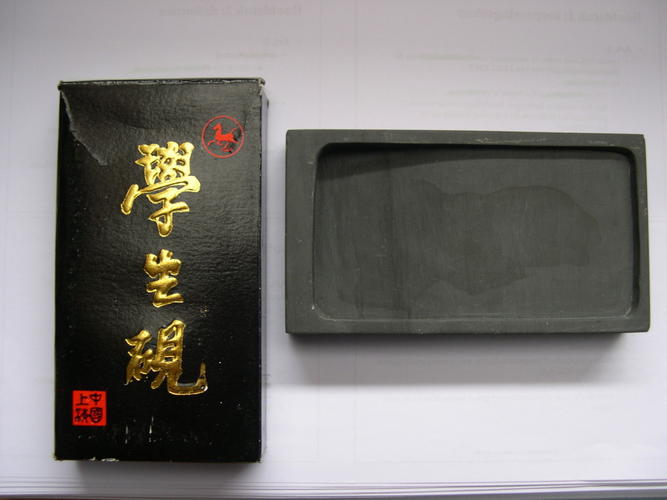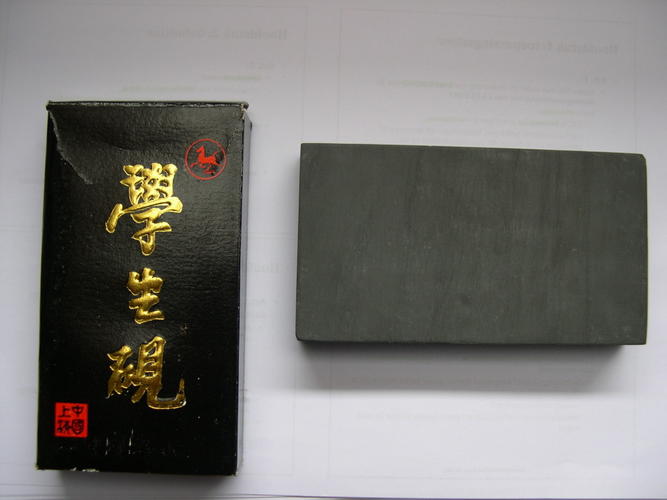Results 11 to 18 of 18
Thread: closet discovery
Threaded View
-
06-22-2011, 12:13 PM #1Junior Member

- Join Date
- Jun 2011
- Location
- Belgium
- Posts
- 20
Thanked: 1 closet discovery
closet discovery
So, at the risk of asking some completely obvious and stupid questions:
When looking at all the pictures of stones on this site, I was thinking "I have seen this before". I went digging in my closet and out came a calligraphy set my father brought me from china. In the set was a stone recipient to prepare the ink in. The recipient was supposed to be filled with an ink base and than worked with another stone to release its beneficial components (something whispers "slurry" in my head):

When turned over, it looked exactly like one of the many stones I saw on this website:

Now for my questions:
- Is it anywhere near possible that the stone could be used for honing?
- Are there any ways to test the stone's quality's without destroying a razor?
- The stone is not completely flat. How can I flatten it?


 LinkBack URL
LinkBack URL About LinkBacks
About LinkBacks






 Reply With Quote
Reply With Quote